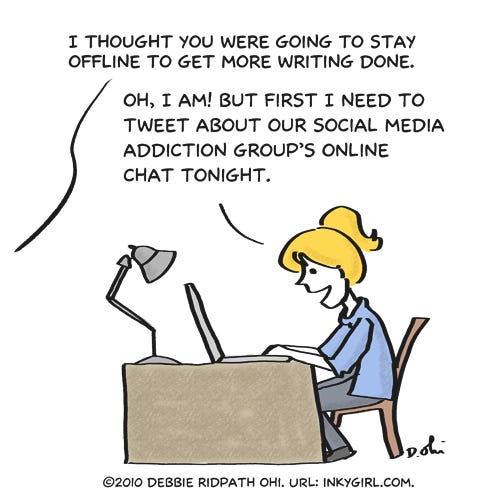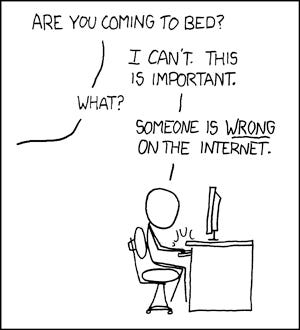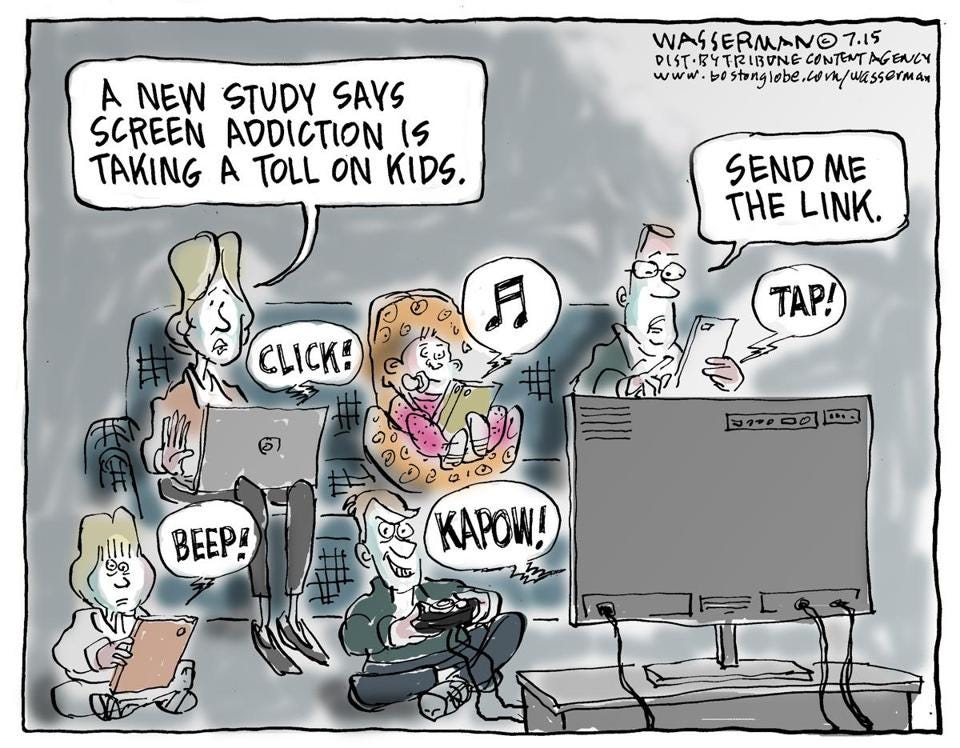Reflecting on our Screen Use: Freedom or Control?
The Evolving Landscape of Media: What's Different Today? by Well-Being Team (Aashita Galundia & Sangeeta Gupta) at Prakriti
Screens, like any other technology, serve a purpose.
Some are obvious—ordering food instantly, connecting with friends or family, using them for work, learning or entertainment. Others are more subtle—seeking validation, filling a void, or escaping the present. The screen can be christened as the Magic Gateway of the era, a constant companion allowing passage at whim.
This relationship with the screen is a complicated one. The best way to understand ourselves in relation to something—or someone—is to watch ourselves in action. Catch yourself in the act! Pause, notice. What exactly am I doing? Why am I doing it? What am I feeling as I do this? Am I exercising a choice, or is it a habit—something mechanical I do? And while habits or patterns serve a purpose, they may or may not be healthy.
A neurological feedback process known as the habit loop explains how habits form and are maintained:
Cue: Feeling bored, stressed, or low → pick up the phone
Craving: Desire for connection, entertainment, or validation
Response: Open an app, scroll, like, comment
Reward: Receive likes, comments—quick and multiple dopamine hits
So, while the digital space can be incredibly flexible and open for exploration, it can also bind us—something that becomes apparent only when we begin noticing our behavior around it.
We think we’re choosing to pick up our phone and exercising our freedom to do so.
But try this: put your phone in another room for an hour. See how many times you think about it. Or notice how often you open your phone in a public space when you're bored or waiting. Mark this on a piece of paper, and against each mark, write down whether the urge was related to an actual need or if it was just—out of habit.
In an insightful conversation (see here), a school senior shared that adolescence is a stage of exploration, where one is trying to figure out: "Who are we?", "What do we connect with?", "Where do we fit into the world?" For digital natives, the boundaries between online and offline are often blurred, as the digital space is a big part of their reality. For them, navigating these questions becomes even more complex. Being able to express oneself in the online space through posts, joining communities, and exploring varied identities can be freeing, but it can also be confusing and destabilizing.
However, this is not new. Media has always been an entertainer, a distractor, and an influencer: radio, comic books, magazines and television—all of which we have been suitably ‘warned’ against through the ages.
What’s different today is the pace of changing trends, the accessibility of devices, and the wide-ranging, algorithm-driven content found in the digital space. Content is not curated by people who have our best interests at heart, but by algorithms designed to benefit platforms. As a result, there is an easy access to content that is often not accurate or balanced in the representation of perspectives, worldviews, and lifestyles. This is fodder for the cognitive biases that taint our thinking—such as confirmation bias, created by echo chambers; cynicism, reinforced by the negativity bias in news; or a loop of social comparison as we scroll through our feeds every day. All of this could lead to isolation and a need for instant gratification as is delineated in this reel.
Furthermore, the plethora of short, dramatic nuggets of information appeals to our lowest instincts—gossip, indulgence, distraction. It requires minimal mental effort and gives us quick hits of gratification.
It is a passive, almost slumberous ‘interaction’—if one can call it that. It is irresistible, taking away control. And somewhere, we are aware of this lack of control. It brings with it an internal conflict: we know this isn’t good for us, yet we keep doing it. A guilty pleasure, one that often leaves us feeling worse.
And as many of us have experienced, screen use can disconnect us from our bodies—hypnotically, almost. We leave the present and retreat into the mind.
So next time, let us pause mid-scroll and ask:
Who is benefitting from this?
Is this intentional or habitual?
What are some other habits around our screen use?
Are we multitasking constantly? Opening two or three windows at a time? Are we checking our phones constantly while trying to focus on something else? How many hours are we spending in front of the screen? Are we using the screen as a means of escape or a tool for procrastination? Are we passive consumers—just watching whatever comes up—or active participants who try to "beat the algorithm" and curate content intentionally?
And let the answers decide if a healthy purpose is being served—then continue or stop with the screen interaction, and in doing so, exercise our freedom and choice.
Purposefully tweak the neurochemical responses in the body. Decide whether you're ‘choosing’ a dose of dopamine versus oxytocin: watching something alone (like endless reels) often releases dopamine, while watching something with family or a friend, and discussing it, releases oxytocin as it builds connection.
Ensure safety in the digital space—the same way we do when we step out of our homes.
Intentionally enrich our work with online tools to deepen our understanding, steering off the temptation of getting quick answers.
Reflect and share together—as families, communities, and institutions—on the delights, insights, discoveries, disappointments, and dangers encountered in daily digital journeys.
And finally, be open to consistent and honest conversations as we learn together how to balance our screen use to meet our evolving needs.




